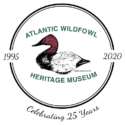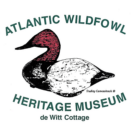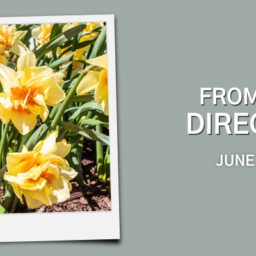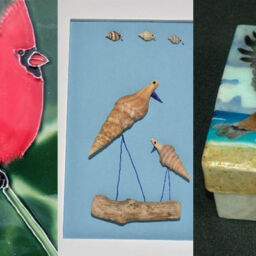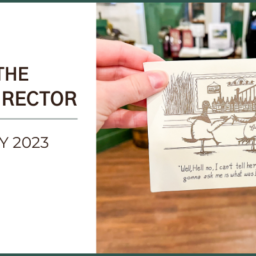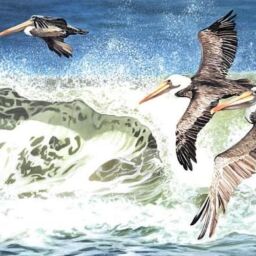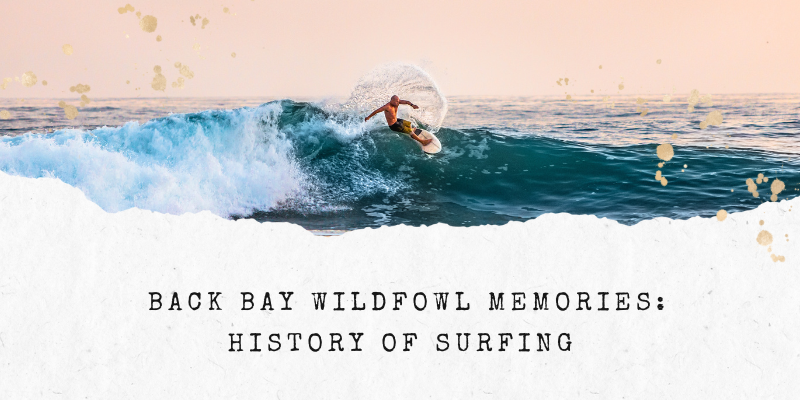
The riding of waves has likely existed since humans began swimming in the ocean. In this sense, body surfing is the oldest type of wave catching. Undoubtedly ancient sailors learned how to ride wave energy on many styles of early boats. Archaeological evidence even suggests that ancient cultures of Peru surfed on reed watercraft for fishing and recreation up to five thousand years ago. However, standing up on what is now called a surfboard is a relatively recent innovation developed by the Polynesians. The influences for modern surfing can be directly traced to the surfers of pre-contact Hawaii. Archaeologists have found that the practice of riding a vessel with a wave was utilized since the pre-Inca cultures around three to five thousand years ago. The Moche Culture (Peru) used the Caballitos de Totora (little horse of Totora), with archaeological evidence showing its use around 200 CE.

An early description of the Inca surfing was documented by Jesuit Missionary, Jose de Acosta, in his 1590 publication Historia natural y moral de las Indias, writing:
“It is true to see them go fishing in Callao de Lima, was for me a thing of great recreation, because there were many and each one in a balsilla caballero, or sitting stubbornly cutting the waves of the sea, which is rough where they fish, they looked like the Tritons, or Neptunes, who paint upon the water.”
To this day Caballitos de Totora are still used by local fishermen and can also be ridden by tourists for recreational purposes.
In July 1885, four teenage Hawaiian princes took a break from their boarding school, St. Mathew’s Hall in San Mateo, and came to cool off in Santa Cruz, California. There, David Kawananakoa, Edward Keliʻiahonui, Jonah Kūhiō Kalaniana’ole, and Elle Mancini surfed the mouth of the San Lorenzo River on custom-shaped redwood boards, according to surf historians Kim Stoner and Geoff Dunn. In 1907 George Freeth was brought to California from Hawaii, to demonstrate surfboard riding as a publicity stunt to promote the opening of the Los Angeles-Redondo-Huntington railroad owned by Henry Huntington, who gave his name to Huntington Beach. Freeth surfed at the Huntington Beach pier and travelled up and down the coast demonstrating surfing and lifeguard skills.

Surfing on the East Coast of the United States began in Wrightville Beach, North Carolina in 1909 when Burke Haywood Bridgers and a colony of surfers introduced surfing to the East Coast. The State of North Carolina honored Burke Haywood Bridgers and the colony of surfers by placing a North Carolina Highway Marker for PIONEER EAST COAST SURFING on Wrightsville Beach and designated Wrightsville Beach as the birthplace of surfing in North Carolina in 2015. North Carolina has the greater weight of published verifiable accurate evidence and impacts a broader geographical area when compared to other east coast states. Burke Haywood Bridgers and the colony of surfers activities are among the earliest appearances of surfboards in the Atlantic Ocean. The early twentieth-century surfers proved that surfing migrated from Hawaii to California and North Carolina about the same time, then Florida. The Wrightsville Beach Museum Waterman Hall of Fame honors, recognizes, and inducts community members for their contributions to the island’s watersport culture.
The East Coast Surfing Championships (ECSC) is an annual surfing contest held in Virginia Beach, VA on the oceanfront, and is one of the United States Surfing Federation’s major amateur events. The ECSC stretches over a four-day period every year in late August at the Virginia Beach Oceanfront. The original inspiration for the East Coast Surfing Championships came from Long Island, New York, in the summer of 1962 when a group of teens held a beach and surf party. Since its official establishment in Virginia Beach in 1963, the ECSC has grown to be the now-longest running surfing contest in the world with the 61st annual surf competition held August 20-27, 2023.

The ECSC is a place not only for professional surfers, but for amateur surfers as well, to ride and contend for cash prizes totaling close to $40,000 and championship titles. Men’s and women’s surfing events are held throughout the week, plus other beach sporting events such as Volleyball, Skateboarding, Skimboarding, a 5k Oceanfront run, and a swimsuit competition. A new event called the Beach Bum Classic was introduced in 2007. The Beach Bum Classic, organized and sponsored by Wareing’s Gym in Virginia Beach, is a triathlon-type event including a one-mile sand run, a three-mile bike race on beach cruisers, and a half-mile surfboard paddling race.
A reported spectator count of over 100,000 people show up to watch the events during the day, and at night, the Virginia Beach Boardwalk fills with people for free concerts on the beach. Bands and musicians include national, regional, and local talents.
The ECSC is planned, organized, and employed by the Virginia Beach Jaycees, a chapter of a nationwide volunteer organization, the United States Jaycees. Media press and coverage includes ESPN, The Washington Post, and USA Today. Join us at the Atlantic Wildfowl Heritage Museum for Vendor Appreciation Days August 25-27, 2023 to celebrate the ECSC.
